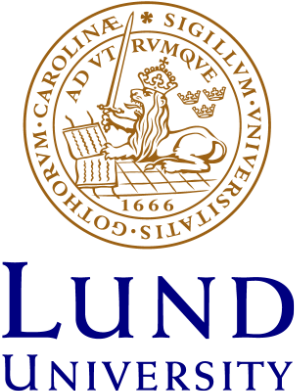Search results
Filter
Filetype
Your search for "*" yielded 535155 hits
Kinetics and Mechanism for Reversible Chloride Transfer between Mercury(II) and Square-Planar Platinum(II) Chloro Ammine, Aqua, and Sulfoxide Complexes. Stabilities, Spectra, and Reactivities of Transient Metal-Metal Bonded Platinum-Mercury Adducts
The Hg2+aq- and HgCl+aq-assisted aquations of [PtCl4]2- (1), [PtCl3(H2O)]- (2), cis-[PtCl2(H2O)2] (3), trans-[PtCl2(H2O)2] (4), [PtCl(H2O)3]+ (5), [PtCl3Me2SO]- (6), trans-[PtCl2(H2O)Me2SO] (7), cis-[PtCl(H2O)2Me2SO]+ (8), trans-[PtCl(H2O)2Me2SO]+ (9), trans-[PtCl2(NH3)2] (10), and cis-[PtCl2(NH3)2] (11) have been studied at 25.0 °C in a 1.00 M HClO4 medium buffered with chloride, using stopped-fl
Kinetics and mechanism for reduction of anticancer active tetrachloroam(m)ine platinum(IV) compounds by glutathione
Glutathione (GSH) reduction of the anticancer-active platinum(IV) compounds trans-[PtCl4(NH3)(thiazole)] (1), trans-[PtCl4(cha)(NH3)] (2), cis-[PtCl4(cha)(NH3)] (3) (cha=cyclohexylamine), and cis-[PtCl4(NH3)2] (4) has been investigated at 25 °C in a 1.0 M aqueous medium at pH 2.0–5.0 (1) and 4.5–6.8 (2–4) using stopped-flow spectrophotometry. The redox reactions follow the second-order rate law d[
Kinetics and Mechanism for Reduction of Oral Anticancer Platinum(IV) Dicarboxylate Compounds by L-Ascorbate Ions
Ascorbate (Asc) reductions of the oral anticancer platinum(IV) prodrugs cis,trans,cis-[PtCl2(OAc)2(cha)(NH3)] (JM216) and cis,trans,cis-[PtCl2(OCOC3H7)2(cha)(NH3)] (JM221) and of the isomers of JM216, viz.trans,cis,cis-[PtCl2(OAc)2(cha)(NH3)] (JM394) and trans,trans,trans-[PtCl2(OAc)2(cha)(NH3)] (JM576) (OAc = acetate, cha = cyclohexylamine) have been investigated in a 1.0 M aqueous perchlorate me
Kinetics and Mechanism for Reduction of the Anticancer Prodrug trans,trans,trans-[PtCl2(OH)2(c-C6H11NH2)(NH3)] (JM 335) by Thiols
Reduction of the anticancer trans platinum(IV) prodrug JM335 by thiols in a moderately alkaline aqueous perchlorate medium is quite rapid and yields trans-[Pt(OH)2(c-C6H11NH2)(NH3)] as the reaction product. The mechanism of reduction involves reductive attack by thiol or thiolate on one of the mutually trans chloride ligands, leading to the formation of a chloride-bridged activated complex.The red
Science for Conservation of the Cultural Heritage
Preservation of the VASA Warship
Det som hände i Mexiko kan hända här
Models of lexical meaning
Lexical semantics is concerned with modeling the meaning of lexicalitems. Its leading questions are how forms and meanings combine, what theymean, how they are used, and of course also how they change. The answers tothese five questions make up the fundamental theoretical assumptions and commitments which underlie different theories of lexical semantics, and they form the basis for their various m
Lessons learned from successful value stream mapping (VSM)
To improve, it’s crucial to see! Vital characteristics of Lean are visualisation and transparency, i.e. allowing everyone to see all what occurs in production. A common tool for this purpose is Value Stream Mapping (VSM). Due to varying flows, performing a successful VSM in construction confers additional challenges. In this paper, lessons learned from successful VSM studies in construction are prTo improve, it’s crucial to see! Vital characteristics of Lean are visualisation and transparency, i.e. allowing everyone to see all what occurs in production. A common tool for this purpose is Value Stream Mapping (VSM). Due to varying flows, performing a successful VSM in construction confers additional challenges. In this paper, lessons learned from successful VSM studies in construction are pr
The study of a kitchen assembly process in industrial housing
The kitchen is the heart of the house where people spend much of their time. It is, therefore, an important room that requires high quality. Because construction is argued to be unproductive and wasteful with low quality, studying a kitchen assemblage in detail is of particular interest due to its complexity with many details. In lean, the visualization and transparency of processes is the core fo
Reaction Mechanism for Olefin Exchange at Chloro Ethene Complexes of Platinum(II)
Synopsis In methanol solutions of Zeise's salt, the parent complex [PtCl3(C2H4)]- as well as its solvolysis product, trans-[PtCl2(C2H4)(MeOH)], exchange rapidly with free ethene. The olefin exchange process, which is largely entropy controlled, involves the substitution labile site trans to the coordinated ethene. Abstract Complex equilibria in methanol/chloroform/dichloromethane solutions contain
Detection of a Novel Intermediate in the Addition of Thiols to Osmium Carbonyl Clusters
Spectroscopic studies of the reaction of [Os-3(CO)(11)MeCN)] with para-thiocresol to form [Os-3(mu-H)(CO)(10)(mu-SC6H4Me-p)] indicate that the reaction proceeds via a two-step consecutive process involving the intermediate [Os-3(CO)(11)-(MeC6H4SH-p)], in which there is an agostic Os-H-S interaction.
Kinetics and Mechanism for Formation of Olefin Complexes in the Reaction between Palladium(II) and Maleic Acid
Complex formation between Pd(H2O)(4)(2+) and maleic acid (H(2)A) has been studied at 25 degrees C and 2.00 M ionic strength in acidic aqueous solution. Reaction takes place with 1:1 stoichiometry. The kinetics has been followed by use of stopped-flow spectrophotometry under pseudo-first-order conditions with maleic acid in excess. In the concentration ranges 0.01 less than or equal to [H(2)A](tot)
